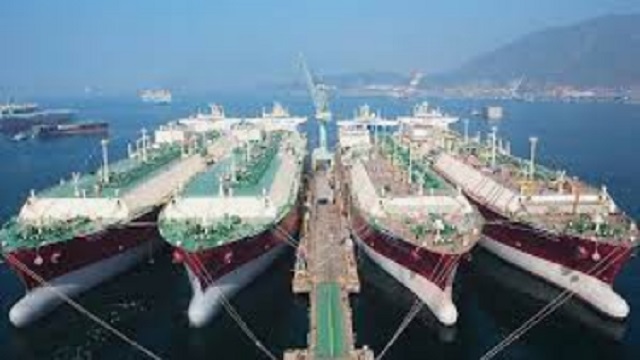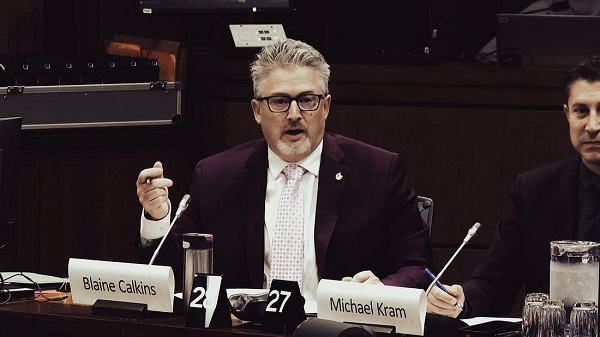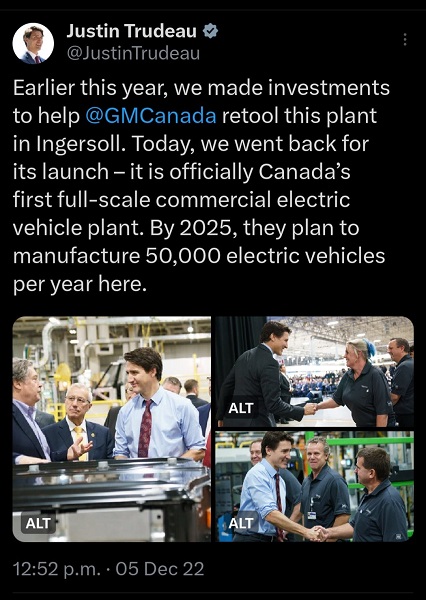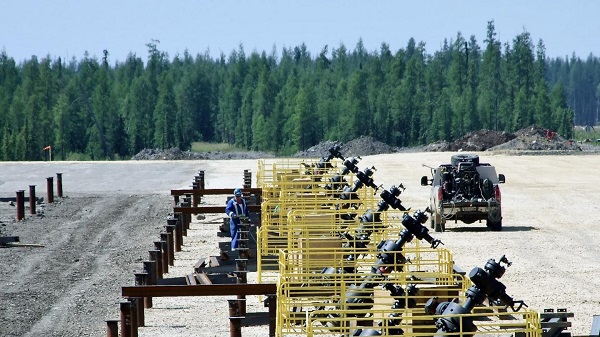Economy
On low natural gas prices: Frontier Centre for Public Policy

From the Frontier Centre for Public Policy
By Terry Etam
To say that “natural gas is a dying commodity” takes either some world-class mental dishonesty, disturbingly blind faith in policy over reality, or some kind of “clouds hate me” philosophical stance on life.
Is there any critical industrial material as bizarre as natural gas?
The stuff holds almost zero interest for the general public, for the same reason no one is interested in the sound of a washing machine. Both boring. Both ubiquitous. Natural gas isn’t even sold on Amazon. But forty-six percent of American homes use natural gas for heat, and surely more in Canada.
But consider the storm below the surface. Traders love it, because it is one of the most volatile commodities in existence, and volatility means trading profits. The volatility, at the slightest provocation, is almost unbelievable at times. The weather pattern shifts for three weeks out over a portion of the US and boom – the entire forward 18 months of prices can collapse or soar.
In the bigger picture though, natural gas today in North America trades at close to the same price it did a quarter century ago – not inflation adjusted, just the same old nominal dollar value, which is astonishing since global gas demand has increased by 60 percent in that time.
Natural gas is a critical fuel for much of the world, and usage is growing, particularly the relatively new field of LNG. According to the Global Gas Infrastructure Tracker website, which doesn’t even like the stuff, there are a total of 2,449 significant pipeline projects underway in the world for a total of 1.2 million kilometers (and that’s the big pipe, not the little straws that go to your house). There are 238 LNG import terminals and 189 export trains in development globally. One hundred and thirty countries either have natural gas systems or are constructing them.
Traders, consumers and businesses love the stuff even if they don’t say it often enough, while others loathe it because it is a ‘fossil fuel’. Natural gas is caught in an existential war whereby said opponents will do everything in their power to just make it go away (they really think they can). The Toronto Globe and Mail, “Canada’s news paper” (note to self: develop ethnocentric balloon head emoji, make millions), recently ran a pricelessly ludicrous opinion piece entitled ‘Natural gas is a dying commodity, and Canada needs to stop supporting it’. The article was written by one of those think tanks (International Institute for Sustainable Development) that produces nothing but ideological amplification, safely distanced from people that actually do stuff, and a mountain of impressive T4 income tax slips (latest fiscal year personnel/consultant expense: $33 million). There is no surprise that their team of political scientists would attack natural gas; their latest financials show that the Government of Canada granted them $40 million, a third of which is from climate activist/federal minister Guilbeault’s office. There’ll be no biting that little hand.
Many climate leadership icons of the world, the US, Canada, Western Europe, Japan… pretty much anyone that can, is building natural gas (LNG or non) infrastructure as fast as they can. Germany, home to the world’s most advanced green energy demolition derby, built an LNG import terminal in an astounding 5 months. Many that want to import LNG but weren’t able to last year because Europe hoovered up every molecule on the market are simply doing what it takes to attain energy security, and that can mean, lord tunderin’, coal. Pakistan is the most notable example – the country plans to quadruple coal fired power output and move away from gas only because it could not obtain it: “A shortage of natural gas, which accounts for over a third of the country’s power output, plunged large areas into hours of darkness last year.” The country’s energy minister went on, “We have some of the world’s most efficient regasified LNG-based power plants. But we don’t have the gas to run them.”
For those fortunate enough to line up LNG supplies, the ante is normally a 15-20 year contract.
To say that “natural gas is a dying commodity” takes either some world-class mental dishonesty, disturbingly blind faith in policy over reality, or some kind of “clouds hate me” philosophical stance on life.
Beyond the silly messaging looking to undermine natural gas though are some very powerful undercurrents that are shaping the world in ways most don’t consider, but they should.
Thanks to the shale revolution in the US and Canada, native natural gas production exploded onto a scene that couldn’t handle the excess, leading to persistently low prices. North America is turning into an LNG export powerhouse, but until that export capacity outpaces productive capability, natural gas prices in North America look set to remain far below global prices.
It is worth remembering how significant this scenario is for North America. Cheap natural gas is an industrial godsend, enabling many strata of industries and enterprises that simply would not exist without. In May of 2022, the head of the Western Equipment Dealers Association, said that the previous winter’s high natural gas prices were unsustainable for businesses that had to heat 30-40,000 square-foot shops. The 2021-22 winter of which he was discontented saw Henry Hub prices average $4.56/mmbtu – about a third of global prices, and a fraction of what the world was to face later that year.
The same article pointed out how the Industrial Energy Consumers of America, a trade group whose members include smelters, plastics and paper-goods makers, wanted the US to stop permitting new LNG export terminals because “The manufacturing sector cannot invest and create jobs without assurances that our natural gas and electricity prices will not be imperiled by excessive LNG exports.”
Those guys aren’t crazy. The US gas market is balanced on a knife edge. A change in next month’s forecast can create havoc in forward prices even up to several years out.
The rise of LNG is making things even more unstable. The Freeport LNG terminal had an 8 month outage due to an accident, removing 2 bcf/d of demand from the market (in a 100 bcf/d market); this single event caused a storage surplus in the US that has depressed natural gas prices ever since. All else being equal, the US natural gas storage scene would be in a deficit to the five year average as opposed to today’s surplus if Freeport had not gone down, and both spot and futures prices would most likely be significantly higher. The Freeport outage probably knocked US natural gas prices down by at least $1/mmbtu for a period of 8 months, and actually probably much more. But even at that level, in a 100 bcf/d market, where 1 bcf is equal to 1 million mmbtus, the cost savings to US consumers totaled $100 million per day. (Of course, had the price stayed higher, we might have seen far more drilling, which may have caused a collapse as well, just a bit further down the road.)
That $100 million per day cost saving came out of the hide of North American natural gas producers selling into that market, and you’d think they wouldn’t like that one little bit. And they don’t. But gas producers have their own realities and game plans which don’t generally involve sacrificing any of their sales for the good of all other producers, as economically sensible as that strategy may be.
US producers find themselves in an odd situation. Every one of the large producers knows that they could cut production by 5 percent and double their profits; the market is that tightly balanced. Doing so would single handedly drive up NG prices substantially – just observe how the gas market goes ape over a change in weather forecast.
But driving up prices, even if it is in their own self interest, will mean a spike in production, because at sustained $4 US gas, the market becomes flooded. EQT president Toby Rice, the largest US gas producer (EQT, not Toby), says at a sustained $4/mmbtu natural gas price, the US could export 60 bcf/d of natural gas. Keep in mind that $4 gas is a fraction, anywhere from a third to ten percent of global LNG prices.
Mr. Rice may very well be correct, but glosses over the reality of natural gas prices: we will never see a sensible sustained price like $4, even though we may average it – we will see 2 and 8 and 3 and 9 and so on and so on.
On top of this, solution gas from oil plays like Permian is providing massive amounts of gas in itself. The Permian, primarily an oil field, produces more solution gas than the entire country of Canada. Permian solution gas, if a stand alone country, would be one of the world’s top five largest producers.
So who cares? Well, you all do. We all do. The goofballs that wrote the Globe & Mail article do, though they either won’t admit it or simply refuse to understand.
Natural gas is the bedrock of most economies, and cheap natural gas is a special elixir to North America. It is absolutely crucial to the level of industrial activity we enjoy. There is no substitute for the clean burning capability of the stuff. Wander into a typical big box store or more crucially try to wander into an industrial building that you won’t be allowed to because it is unsafe… drive around an industrial park and look at all the magnificent industrial activity that gives us the life we live. Now imagine those being heated by wood stoves. Or solar panels in dead of winter. Geothermal? Sure, if you plan on drilling into the earth’s mantle. And if you live on an appropriate acreage. And have enough money. I guess there’s always coal.
And that sums up a lot of the world’s population’s situation: If countries aren’t building LNG, it’s likely because they are building coal, as in the countries that Europe outbid for LNG last winter in a shocking me-first display of hydrocarbon-swilling (accompanied by fossil-fuel-subsidizing self-loathing?) hypocrisy.
There are storm clouds on the horizon. The drilling efficiency that these companies boast about relentlessly in IR presentations and every 90 days in conference calls consists to a large degree on drilling longer horizontal wells. Do the math on that one. Reservoirs are finite in size. If you increase the length of wells by another mile or two, you’re just draining the reservoir faster. One day we will see true sweet spot exhaustion, which is not a laughing matter when one considers that three fields – Appalachia, Haynesville and Permian – account for more than 70 percent of US gas production, and about a fifth of global production.
But for now, North America reigns supreme with respect to the world’s most coveted heating and industrial fuel. The US, Canada and Mexico remain more or less isolated from global natural gas prices for now, which brings incalculable benefits to North American businesses and citizens, a benefit that shouldn’t be taken for granted.
Terry Etam is a columnist with the BOE Report, a leading energy industry newsletter based in Calgary. He is the author of The End of Fossil Fuel Insanity. You can watch his Policy on the Frontier session from May 5, 2022 here.
Business
Canada’s combative trade tactics are backfiring

This article supplied by Troy Media.
Defiant messaging may play well at home, but abroad it fuels mistrust, higher tariffs and a steady erosion of Canada’s agri-food exports
The real threat to Canadian exporters isn’t U.S. President Donald Trump’s tariffs, it’s Ottawa and Queen’s Park’s reckless diplomacy.
The latest tariff hike, whether triggered by Ontario’s anti-tariff ad campaign or not, is only a symptom. The deeper problem is Canada’s escalating loss of credibility at the trade table. Washington’s move to raise duties from 35 per cent to 45 per cent on nonCUSMA imports (goods not covered under the Canada-United States-Mexico Agreement, the successor to NAFTA) reflects a diplomatic climate that is quickly souring, with very real consequences for Canadian exporters.
Some analysts argue that a 10-point tariff increase is inconsequential. It is not. The issue isn’t just what is being tariffed; it is the tone of the relationship. Canada is increasingly seen as erratic and reactive, negotiating from emotion rather than strategy. That kind of reputation is dangerous when dealing with the U.S., which remains Canada’s most important trade partner by a wide margin.
Ontario Premier Doug Ford’s stand up to America messaging, complete with a nostalgic Ronald Reagan cameo, may have been rooted in genuine conviction. Many Canadians share his instinct to defend the country’s interests with bold language. But in diplomacy, tone often outweighs intent. What plays well domestically can sound defiant abroad, and the consequences are already being felt in boardrooms and warehouses across the country.
Ford’s public criticisms of companies such as Crown Royal, accused of abandoning Ontario, and Stellantis, which recently announced it will shift production of its Jeep Compass from Brampton to Illinois as part of a US$13 billion U.S. investment, may appeal to voters who like to see politicians get tough. But those theatrics reinforce the impression that Canada is hostile to
international investors. At a time when global capital can move freely, that perception is damaging. Collaboration, not confrontation, is what’s needed most to secure investment in Canada’s economy.
Such rhetoric fuels uncertainty on both sides of the border. The results are clear: higher tariffs, weaker investor confidence and American partners quietly pivoting away from Canadian suppliers.
Many Canadian food exporters are already losing U.S. accounts, not because of trade rules but because of eroding trust. Executives in the agri-food sector are beginning to wonder whether Canada can still be counted on as a reliable partner, and some have already shifted contracts southward.
Ford’s political campaigns may win applause locally, but Washington’s retaliatory measures do not distinguish between provinces. They hit all exporters, including Canada’s food manufacturers that rely heavily on the U.S. market, which purchases more than half of Canada’s agri-food exports. That means farmers, processors and transportation companies across the country are caught in the crossfire.
Those who believe the new 45 per cent rate will have little effect are mistaken. Some Canadian importers now face steeper duties than competitors in Vietnam, Laos or even Myanmar. And while tariffs matter, perception matters more. Right now, the optics for Canada’s agri-food sector are poor, and once confidence is lost, it is difficult to regain.
While many Canadians dismiss Trump as unpredictable, the deeper question is what happened to Canada’s once-cohesive Team Canada approach to trade. The agri-food industry depends on stability and predictability. Alienating our largest customer, representing 34 per cent of the global consumer market and millions of Canadian jobs tied to trade, is not just short-sighted, it’s economically reckless.
There is no trade war. What we are witnessing is an American recalibration of domestic fiscal policy with global consequences. Canada must adapt with prudence, not posturing.
The lesson is simple: reckless rhetoric is costing Canada far more than tariffs. It’s time to change course, especially at Queen’s Park.
Dr. Sylvain Charlebois is a Canadian professor and researcher in food distribution and policy. He is senior director of the Agri-Food Analytics Lab at Dalhousie University and co-host of The Food Professor Podcast. He is frequently cited in the media for his insights on food prices, agricultural trends, and the global food supply chain
Troy Media empowers Canadian community news outlets by providing independent, insightful analysis and commentary. Our mission is to support local media in helping Canadians stay informed and engaged by delivering reliable content that strengthens community connections and deepens understanding across the country
Business
Trans Mountain executive says it’s time to fix the system, expand access, and think like a nation builder

Mike Davies calls for ambition and reform to build a stronger Canada
A shift in ambition
A year after the Trans Mountain Expansion Project came into service, Mike Davies, President and Chief Operating Officer at Trans Mountain, told the B.C. Business Summit 2025 that the project’s success should mark the beginning of a new national mindset — one defined by ambition, reform, and nation building.
“It took fifteen years to get this version of the project built,” Davies said. “During that time, Canadian producers lost about $50 billion in value because they were selling into a discounted market. We have some of the world’s largest reserves of oil and gas, but we can only trade with one other country. That’s unusual.”
With the expansion now in operation, that imbalance is shifting. “The differential on Canadian oil has narrowed by about $13 billion,” he said. “That’s value that used to be extracted by the United States and now stays in Canada — supporting healthcare, reconciliation, and energy transformation. About $5 billion of that is in royalties and taxes. It’s meaningful for us as a society.”
Davies rejected the notion that Trans Mountain was a public subsidy. “The federal government lent its balance sheet so that nation-building infrastructure could get built,” he said. “In our first full year of operation, we’ll return more than $1.3 billion to the federal government, rising toward $2 billion annually as cleanup work wraps up.”
At the Westridge Marine Terminal, shipments have increased from one tanker a week to nearly one a day, with more than half heading to Asia. “California remains an important market,” Davies said, “but diversification is finally happening — and it’s vital to our long-term prosperity.”
Fixing the system to move forward
Davies said this moment of success should prompt a broader rethinking of how Canada approaches resource development. “We’re positioned to take advantage of this moment,” he said. “Public attitudes are shifting. Canadians increasingly recognize that our natural resource advantages are a strength, not a liability. The question now is whether governments can seize it — and whether we’ll see that reflected in policy.”
He called for “deep, long-term reform” to restore scalability and investment confidence. “Linear infrastructure like pipelines requires billions in at-risk capital before a single certificate is issued,” he said. “Canada has a process for everything — we’re a responsible country — but it doesn’t scale for nation-building projects.”
Regulatory reform, he added, must go hand in hand with advancing economic reconciliation. “The challenge of our generation is shifting Indigenous communities from dependence to participation,” he said. “That means real ownership, partnership, and revenue opportunities.”
Davies urged renewed cooperation between Alberta and British Columbia, calling for “interprovincial harmony” on West Coast access. “I’d like to see Alberta see B.C. as part of its constituency,” he said. “And I’d like to see B.C. recognize the need for access.”
He summarized the path forward in plain terms: “We need to stem the exit of capital, create an environment that attracts investment, simplify approvals to one major process, and move decisions from the courts to clear legislation. If we do that, we can finally move from being a market hostage to being a competitor — and a nation builder.”
-

 Business6 hours ago
Business6 hours agoTrans Mountain executive says it’s time to fix the system, expand access, and think like a nation builder
-

 Business1 day ago
Business1 day agoThe painful return of food inflation exposes Canada’s trade failures
-

 Business1 day ago
Business1 day agoCBC uses tax dollars to hire more bureaucrats, fewer journalists
-

 Sports2 days ago
Sports2 days agoWhile Ohtani marches into MLB history, Nippon league’s shame lingers
-

 Alberta1 day ago
Alberta1 day agoCoutts border officers seize 77 KG of cocaine in commercial truck entering Canada – Street value of $7 Million
-

 National1 day ago
National1 day agoElection Officials Warn MPs: Canada’s Ballot System Is Being Exploited
-

 Business1 day ago
Business1 day agoPaying for Trudeau’s EV Gamble: Ottawa Bought Jobs That Disappeared
-

 Bruce Dowbiggin1 day ago
Bruce Dowbiggin1 day agoIs Roundball A Square Game? Sports Betting Takes Another Hit










